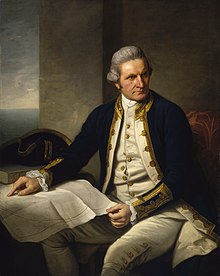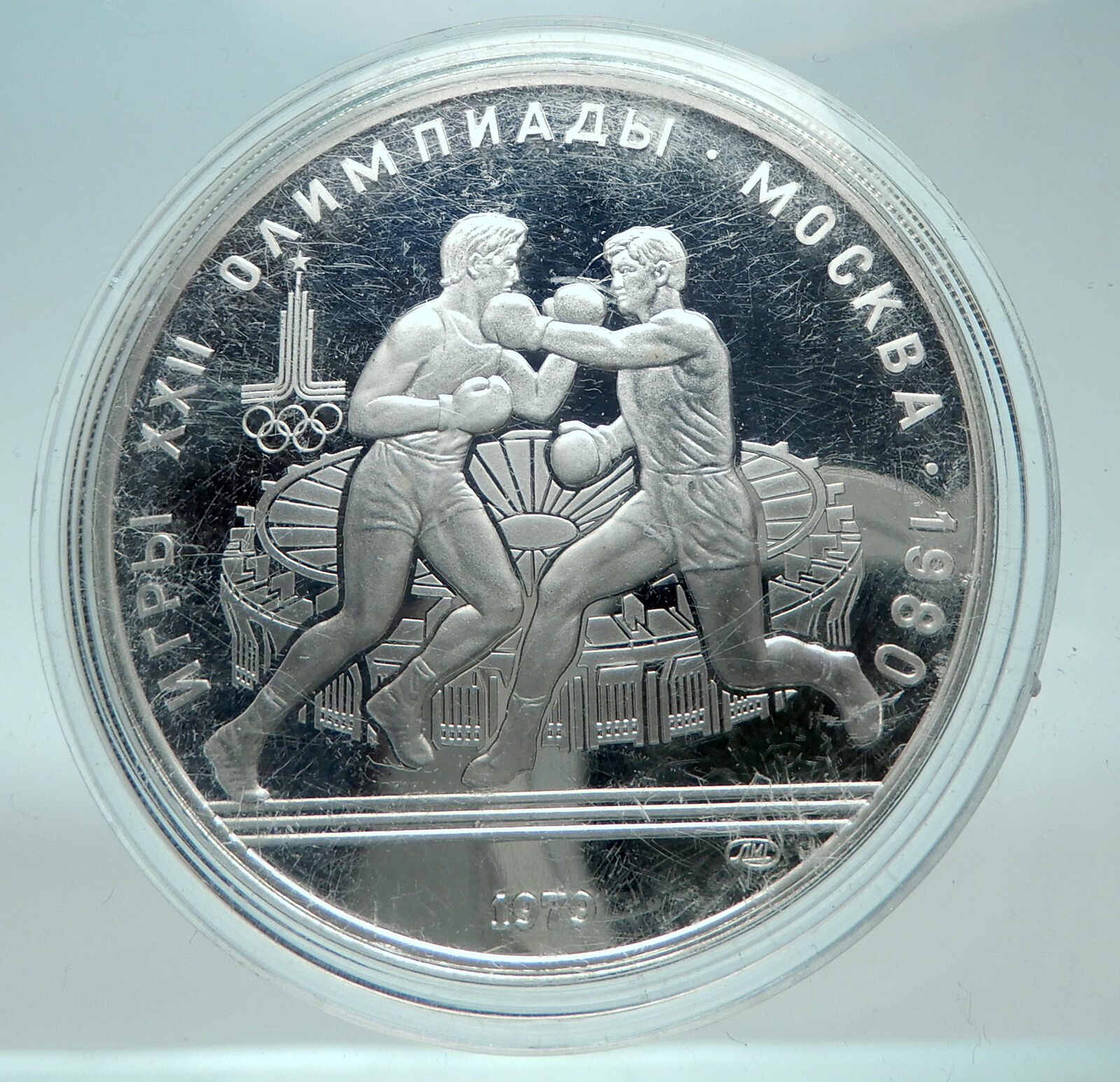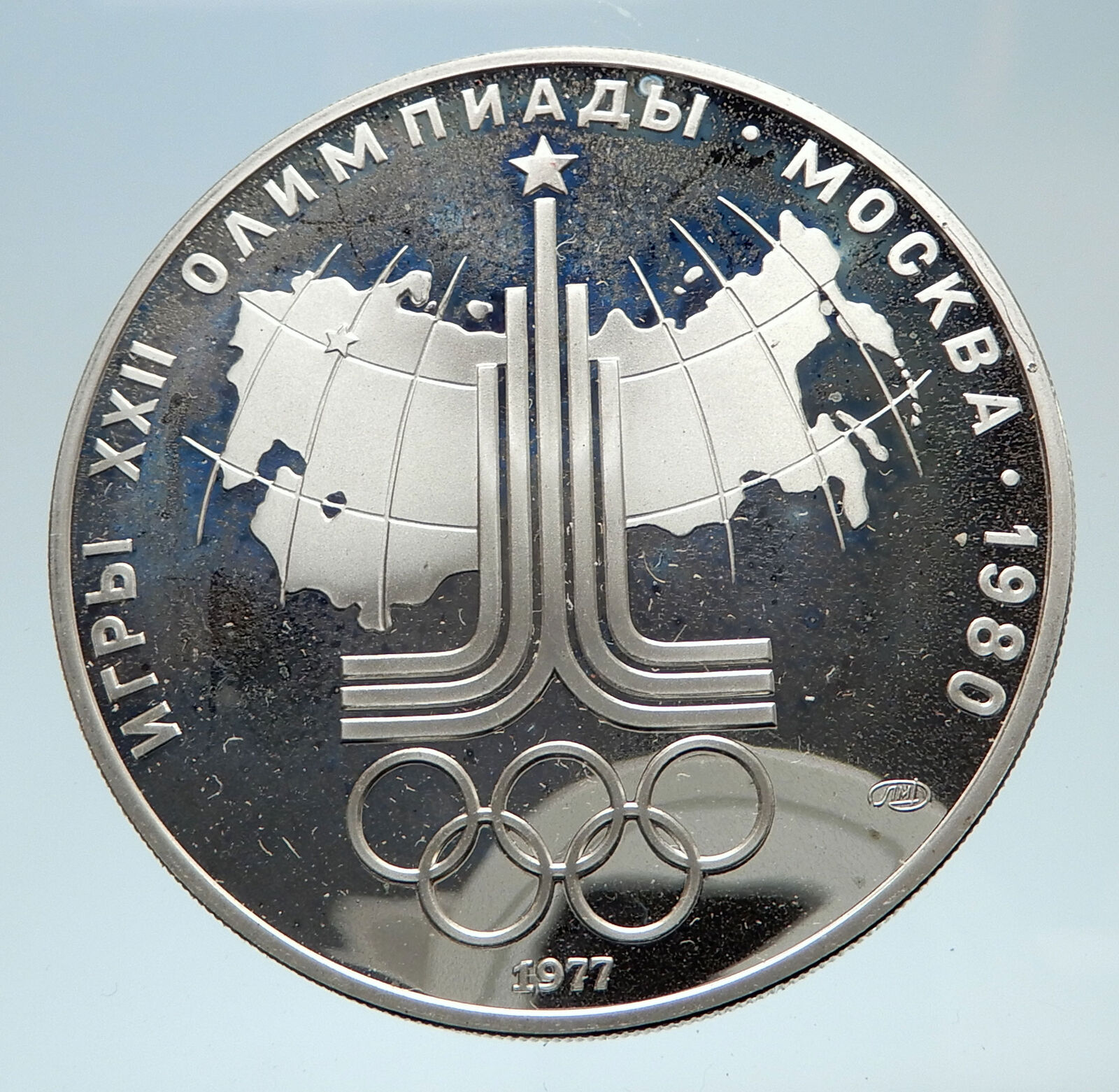|
Russia as USSR Russia
500th Anniversary of the United Russian State – Fleet of Peter the Great
1990 Proof Silver 3 Roubles 39mm (34.83 grams) 0.900 Silver (1.0000 oz. ASW)
Reference: Y# 248, Schön# 200
СССР Ag 31,1 ММД 3 РУБЛЯ 1990, The Coat-of-Arms of the Soviet Union.
500∙ЛЕТИЕ ЕДИНОГО РУССКОГО ГОСУДАРСТВА ФЛОТ, ПЕТРА ВЕЛИКОГО, Two ships, coin featuring head of Peter the Great.
You are bidding on the exact item pictured, provided with a Certificate of Authenticity and Lifetime Guarantee of Authenticity.
_-_Portrait_de_Pierre_Ier_(musée_de_l’Ermitage).jpg/250px-J.-M._Nattier_(d'après)_-_Portrait_de_Pierre_Ier_(musée_de_l’Ermitage).jpg) Peter the Great (1672 – 1725) was a monarch of the Tsardom of Russia and later the Russian Empire from 7 May S. 27 April] 1682 until his death in 1725, jointly ruling before 1696 with his elder half-brother, Ivan V. Under his reign, Russia was modernised and grew into a European power. Peter the Great (1672 – 1725) was a monarch of the Tsardom of Russia and later the Russian Empire from 7 May S. 27 April] 1682 until his death in 1725, jointly ruling before 1696 with his elder half-brother, Ivan V. Under his reign, Russia was modernised and grew into a European power.
Through a number of successful wars, he captured ports at Azov and the Baltic Sea, laying the groundwork for the Imperial Russian Navy, ending uncontested Swedish supremacy in the Baltic and beginning the Tsardom’s expansion into a much larger empire that became a major European power. He led a cultural revolution that replaced some of the traditionalist and medieval social and political systems with ones that were modern, scientific, Westernised and based on the Enlightenment. Peter’s reforms had a lasting impact on Russia, and many institutions of the Russian government trace their origins to his reign. He adopted the title of Emperor in place of the old title of Tsar in 1721, and founded and developed the city of Saint Petersburg, which remained the capital of Russia until 1917.
However, the formation of local elites domestically was not his main priority, and the first Russian university—Saint Petersburg State University—was founded only a year before his death, in 1724. The second one, Moscow State University, was founded 30 years after his death, during the reign of his daughter Elizabeth.
 Captain James Cook FRS (7 November 1728 – 14 February 1779) was a British explorer, navigator, cartographer, and captain in the Royal Navy. He made detailed maps of Newfoundland prior to making three voyages to the Pacific Ocean, during which he achieved the first recorded European contact with the eastern coastline of Australia and the Hawaiian Islands, and the first recorded circumnavigation of New Zealand. Captain James Cook FRS (7 November 1728 – 14 February 1779) was a British explorer, navigator, cartographer, and captain in the Royal Navy. He made detailed maps of Newfoundland prior to making three voyages to the Pacific Ocean, during which he achieved the first recorded European contact with the eastern coastline of Australia and the Hawaiian Islands, and the first recorded circumnavigation of New Zealand.
Cook joined the British merchant navy as a teenager and joined the Royal Navy in 1755. He saw action in the Seven Years’ War and subsequently surveyed and mapped much of the entrance to the Saint Lawrence River during the siege of Quebec, which brought him to the attention of the Admiralty and Royal Society. This acclaim came at a crucial moment in his career and the direction of British overseas exploration, and led to his commission in 1766 as commander of HM Bark Endeavour for the first of three Pacific voyages.
In three voyages, Cook sailed thousands of miles across largely uncharted areas of the globe. He mapped lands from New Zealand to Hawaii in the Pacific Ocean in greater detail and on a scale not previously achieved. As he progressed in his voyages of discovery, he surveyed and named features, and recorded islands and coastlines on European maps for the first time. He displayed a combination of seamanship, superior surveying and cartographic skills, physical courage, and an ability to lead men in adverse conditions.
Cook was attacked and killed in 1779 during his third exploratory voyage in the Pacific while attempting to kidnap Hawaiian chief Kalaniʻōpuʻu in order to reclaim a cutter stolen from one of his ships. He left a legacy of scientific and geographical knowledge which influenced his successors well into the 20th century, and numerous memorials worldwide have been dedicated to him.
 The Union of Soviet Socialist Republics (USSR, Russian: Союз Советских Социалистических Республик, tr. Soyuz Sovetskikh Sotsialisticheskikh Respublik, abbreviated СССР, SSSR), also known as the Soviet Union (Советский Союз), was a constitutionally socialist state that existed on the territory of most of the former Russian Empire in Eurasia between 1922 and 1991. The Union of Soviet Socialist Republics (USSR, Russian: Союз Советских Социалистических Республик, tr. Soyuz Sovetskikh Sotsialisticheskikh Respublik, abbreviated СССР, SSSR), also known as the Soviet Union (Советский Союз), was a constitutionally socialist state that existed on the territory of most of the former Russian Empire in Eurasia between 1922 and 1991.
The Soviet Union had a single-party political system dominated by the Communist Party. Nominally a union of Soviet republics, of which there were 15 after 1956, with the capital in Moscow, de facto the Soviet Union was a highly centralized state with a planned economy. The security agency KGB actively oversaw much of the Soviet society.
The union was founded in December 1922, when the Russian SFSR, which formed during the Russian Revolution of 1917 and emerged victorious in the ensuing Russian Civil War, unified with the Transcaucasian, Ukrainian and Belorussian SSRs. After the death of Vladimir Lenin, the first Soviet leader, power was eventually consolidated by Joseph Stalin, who led the country through a large-scale industrialization with command economy and political repression. During World War II, in June 1941, the Soviet Union was attacked by Germany, a country it had signed a non-aggression pact with. After four years of warfare, the Soviet Union emerged as one of the world’s two superpowers, extending its influence into much of Eastern Europe and beyond. The Cold War, a global ideological and political struggle between the Soviet Union and its satellites from the Eastern Bloc on the one side and the United States and its allies on the other side, which the Soviet bloc, hit by economic standstill, ultimately lost, marked the post-war period. In the late 1980s the last Soviet leader Mikhail Gorbachev tried to reform the state with his policies of perestroika and glasnost, but the Soviet Union ultimately collapsed and was formally dissolved in December 1991 after the abortive August coup attempt. Since then the Russian Federation is exercising its rights and fulfilling its obligations.
_-_Crimea_disputed.svg/220px-Russian_Federation_(orthographic_projection)_-_Crimea_disputed.svg.png) Russia (Russian: Росси́я, tr. Rossiya), also officially known as the Russian Federation (Russian: Российская Федерация, tr. Rossiyskaya Federatsiya), is a country in Eurasia. At 17,125,200 square kilometres (6,612,100 sq mi), Russia is the largest country in the world by surface area, covering more than one-eighth of the Earth’s inhabited land area, and the ninth most populous, with over 144 million people at the end of March 2016. The European western part of the country is much more populated and urbanised than the eastern; about 77% of the population live in European Russia. Russia’s capital Moscow is one of the largest cities in the world; other major urban centers include Saint Petersburg, Novosibirsk, Yekaterinburg, Chelyabinsk, Nizhny Novgorod, Ufa and Kazan. Russia (Russian: Росси́я, tr. Rossiya), also officially known as the Russian Federation (Russian: Российская Федерация, tr. Rossiyskaya Federatsiya), is a country in Eurasia. At 17,125,200 square kilometres (6,612,100 sq mi), Russia is the largest country in the world by surface area, covering more than one-eighth of the Earth’s inhabited land area, and the ninth most populous, with over 144 million people at the end of March 2016. The European western part of the country is much more populated and urbanised than the eastern; about 77% of the population live in European Russia. Russia’s capital Moscow is one of the largest cities in the world; other major urban centers include Saint Petersburg, Novosibirsk, Yekaterinburg, Chelyabinsk, Nizhny Novgorod, Ufa and Kazan.
Extending across the entirety of Northern Asia and much of Eastern Europe, Russia spans eleven time zones and incorporates a wide range of environments and landforms. From northwest to southeast, Russia shares land borders with Norway, Finland, Estonia, Latvia, Lithuania and Poland (both with Kaliningrad Oblast), Belarus, Ukraine, Georgia, Azerbaijan, Kazakhstan, China, Mongolia and North Korea. It shares maritime borders with Japan by the Sea of Okhotsk and the U.S. state of Alaska across the Bering Strait.
The East Slavs emerged as a recognizable group in Europe between the 3rd and 8th centuries AD. Founded and ruled by a Varangian warrior elite and their descendants, the medieval state of Rus arose in the 9th century. In 988 it adopted Orthodox Christianity from the Byzantine Empire, beginning the synthesis of Byzantine and Slavic cultures that defined Russian culture for the next millennium. Rus’ ultimately disintegrated into a number of smaller states; most of the Rus’ lands were overrun by the Mongol invasion and became tributaries of the nomadic Golden Horde in the 13th century. The Grand Duchy of Moscow gradually reunified the surrounding Russian principalities, achieved independence from the Golden Horde, and came to dominate the cultural and political legacy of Kievan Rus’. By the 18th century, the nation had greatly expanded through conquest, annexation, and exploration to become the Russian Empire, which was the third largest empire in history, stretching from Poland on the west to Alaska on the east.
Following the Russian Revolution, the Russian Soviet Federative Socialist Republic became the largest and leading constituent of the Union of Soviet Socialist Republics, the world’s first constitutionally socialist state. The Soviet Union played a decisive role in the Allied victory in World War II, and emerged as a recognized superpower and rival to the United States during the Cold War. The Soviet era saw some of the most significant technological achievements of the 20th century, including the world’s first human-made satellite and the launching of the first humans in space. By the end of 1990, the Soviet Union had the world’s second largest economy, largest standing military in the world and the largest stockpile of weapons of mass destruction. Following the dissolution of the Soviet Union in 1991, twelve independent republics emerged from the USSR: Russia, Ukraine, Belarus, Kazakhstan, Uzbekistan, Armenia, Azerbaijan, Georgia, Kyrgyzstan, Moldova, Tajikistan, Turkmenistan and the Baltic states regained independence: Estonia, Latvia, Lithuania; the Russian SFSR reconstituted itself as the Russian Federation and is recognized as the continuing legal personality and sole successor state of the Soviet Union.[30] It is governed as a federal semi-presidential republic.
The Russian economy ranks as the twelfth largest by nominal GDP and sixth largest by purchasing power parity in 2015. Russia’s extensive mineral and energy resources are the largest such reserves in the world, making it one of the leading producers of oil and natural gas globally. The country is one of the five recognized nuclear weapons states and possesses the largest stockpile of weapons of mass destruction. Russia is a great power as well as a regional power and has been characterised as a potential superpower. It is permanent member of the United Nations Security Council, as well as a member of the G20, the Council of Europe, the Asia-Pacific Economic Cooperation (APEC), the Shanghai Cooperation Organisation (SCO), the Organization for Security and Co-operation in Europe (OSCE), and the World Trade Organization (WTO), as well as being the leading member of the Commonwealth of Independent States (CIS), the Collective Security Treaty Organization (CSTO) and one of the five members of the Eurasian Economic Union (EEU), along with Armenia, Belarus, Kazakhstan and Kyrgyzstan.
|





_-_Portrait_de_Pierre_Ier_(musée_de_l’Ermitage).jpg/250px-J.-M._Nattier_(d'après)_-_Portrait_de_Pierre_Ier_(musée_de_l’Ermitage).jpg) Peter the Great (1672 – 1725) was a monarch of the Tsardom of Russia and later the Russian Empire from 7 May S. 27 April] 1682 until his death in 1725, jointly ruling before 1696 with his elder half-brother, Ivan V. Under his reign, Russia was modernised and grew into a European power.
Peter the Great (1672 – 1725) was a monarch of the Tsardom of Russia and later the Russian Empire from 7 May S. 27 April] 1682 until his death in 1725, jointly ruling before 1696 with his elder half-brother, Ivan V. Under his reign, Russia was modernised and grew into a European power. Captain James Cook FRS (7 November 1728 – 14 February 1779) was a British explorer, navigator, cartographer, and captain in the Royal Navy. He made detailed maps of Newfoundland prior to making three voyages to the Pacific Ocean, during which he achieved the first recorded European contact with the eastern coastline of Australia and the Hawaiian Islands, and the first recorded circumnavigation of New Zealand.
Captain James Cook FRS (7 November 1728 – 14 February 1779) was a British explorer, navigator, cartographer, and captain in the Royal Navy. He made detailed maps of Newfoundland prior to making three voyages to the Pacific Ocean, during which he achieved the first recorded European contact with the eastern coastline of Australia and the Hawaiian Islands, and the first recorded circumnavigation of New Zealand.  The Union of Soviet Socialist Republics (USSR, Russian: Союз Советских Социалистических Республик, tr. Soyuz Sovetskikh Sotsialisticheskikh Respublik, abbreviated СССР, SSSR), also known as the Soviet Union (Советский Союз), was a constitutionally socialist state that existed on the territory of most of the former Russian Empire in Eurasia between 1922 and 1991.
The Union of Soviet Socialist Republics (USSR, Russian: Союз Советских Социалистических Республик, tr. Soyuz Sovetskikh Sotsialisticheskikh Respublik, abbreviated СССР, SSSR), also known as the Soviet Union (Советский Союз), was a constitutionally socialist state that existed on the territory of most of the former Russian Empire in Eurasia between 1922 and 1991._-_Crimea_disputed.svg/220px-Russian_Federation_(orthographic_projection)_-_Crimea_disputed.svg.png) Russia (Russian: Росси́я, tr. Rossiya), also officially known as the Russian Federation (Russian: Российская Федерация, tr. Rossiyskaya Federatsiya), is a country in Eurasia. At 17,125,200 square kilometres (6,612,100 sq mi), Russia is the largest country in the world by surface area, covering more than one-eighth of the Earth’s inhabited land area, and the ninth most populous, with over 144 million people at the end of March 2016. The European western part of the country is much more populated and urbanised than the eastern; about 77% of the population live in European Russia. Russia’s capital Moscow is one of the largest cities in the world; other major urban centers include Saint Petersburg, Novosibirsk, Yekaterinburg, Chelyabinsk, Nizhny Novgorod, Ufa and Kazan.
Russia (Russian: Росси́я, tr. Rossiya), also officially known as the Russian Federation (Russian: Российская Федерация, tr. Rossiyskaya Federatsiya), is a country in Eurasia. At 17,125,200 square kilometres (6,612,100 sq mi), Russia is the largest country in the world by surface area, covering more than one-eighth of the Earth’s inhabited land area, and the ninth most populous, with over 144 million people at the end of March 2016. The European western part of the country is much more populated and urbanised than the eastern; about 77% of the population live in European Russia. Russia’s capital Moscow is one of the largest cities in the world; other major urban centers include Saint Petersburg, Novosibirsk, Yekaterinburg, Chelyabinsk, Nizhny Novgorod, Ufa and Kazan.




